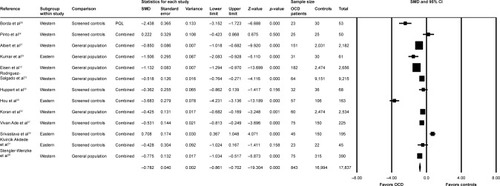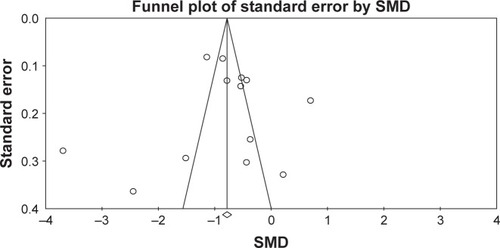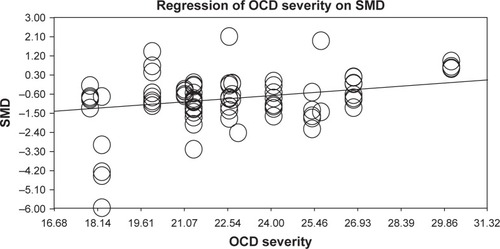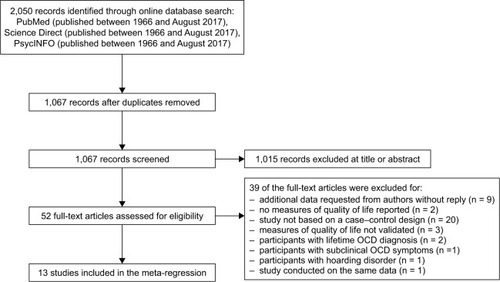Figures & data
Table 1 Characteristics of the studies included in the meta-analysis (n = 13)
Figure 2 Forest plot between groups with OCD and controls on global QOL (n = 13).

Figure 3 Funnel plot of publication bias for the meta-analysis between groups with OCD and controls on global QOL.

Figure 4 Meta-regression of global QOL as a function of OCD severity.


